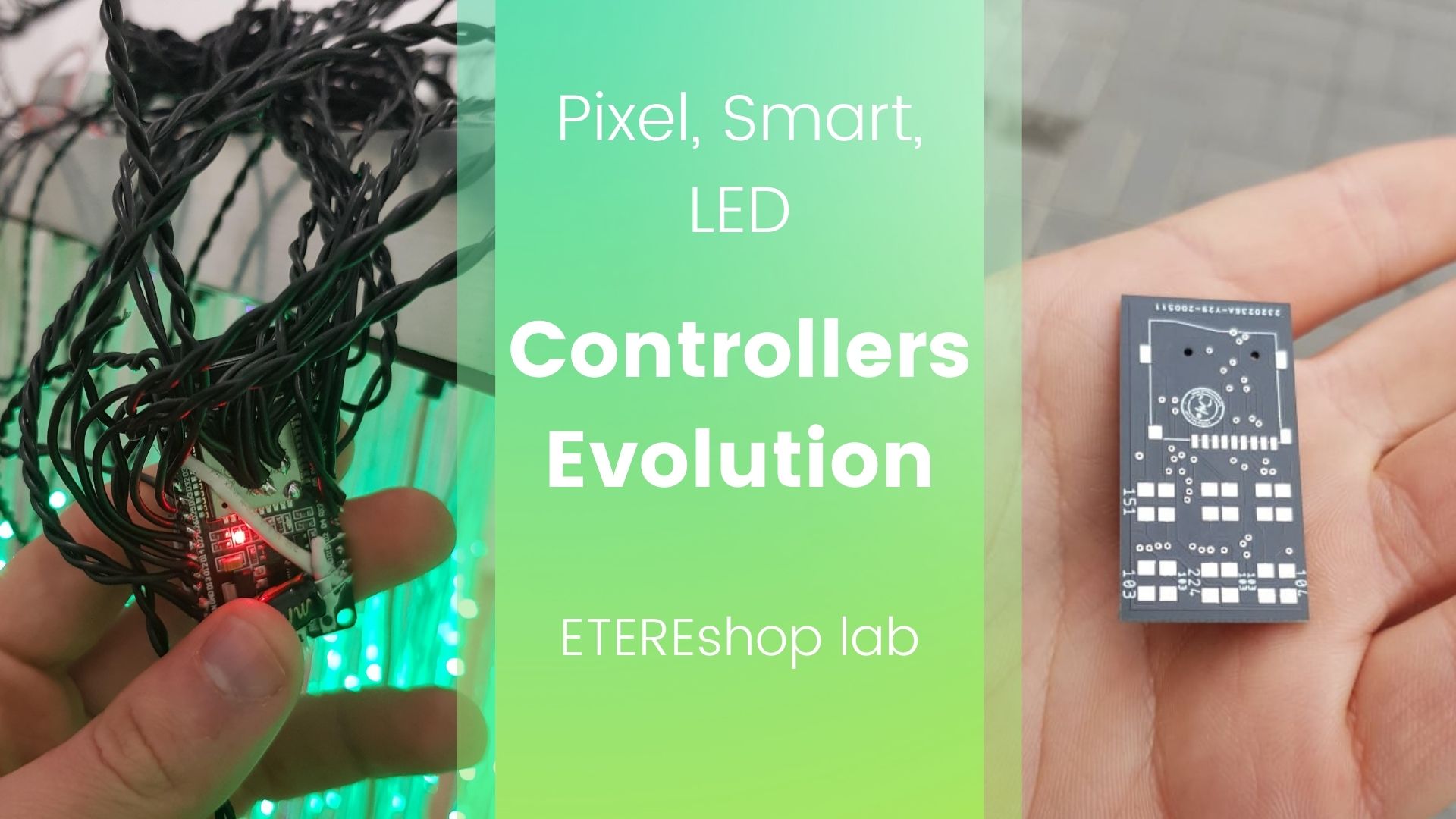

Home » Blog » Our Lab » Pixel Smart LED Controllers for Ad Signs, Stage Equipment and more

Light-up signs, decorations, and equipment are among the most obvious ways to attract audience attention to your product or service, be you a stage artist, DJ, club owner, or any other business. While simple neon signs are classics, most customers are looking for more sophisticated solutions such as panels, signs, and other products with Pixel Smart LEDs.
And as soon as you have an idea for the final product in your head, it’s time to think about how it will be implemented. Since this is not just a retro sign with bulbs, you cannot just plug the cord into the mains. You will want to use all the possibilities of Smart Pixel LEDs, such as switching of light effects, sound activation, synchronization with other light-up equipment, and, of course, different Pixel LED control options, depending on the situation and the type of the
| NODE MCU | ESP-01 | ESP-12E | ESP-12E mini | ESP-32 | Teensy 3.2 | Teensy 3.6 | |
|---|---|---|---|---|---|---|---|
| FPS | 30 | 25 | 30 | 30 | 25 | 25 | 12 |
| Number of lines | 7 | 1/2 | 4 | 6 | 16 | 8 | 8 |
| Max. amount of LEDs that can be controlled per line | 1500 | 1000 | 1200 | 1200 | 1200 | 450 | 1360 |
| Max. amount of LEDs that can be controlled | 4760, more with decline FPS 680/date | 1300 |
2720, more with decline FPS 680/date | 4080, more with decline FPS 680/date | 16000, more with decline FPS 1000/date | 4500 | 10850 |
| Interconnection | radio, DMX, music activation, Artnet 2,4 GHz, stand-alone |
Wi-Fi | radio, DMX, music activation, Artnet 2,4 GHz, Wi-Fi, stand-alone | music activation, Artnet 2,4 GHz, Wi-Fi, stand-alone | radio, DMX, music activation, Artnet 2,4 GHz, Wi-Fi, stand-alone | radio, DMX, music activation, stand-alone | radio, DMX, music activation, stand-alone |
| Price | $70 | $30 | $70 | $70 | $100 | $80 | $150 |
| 20 buttons transmitter | 2 buttons transmitter | DMX transmitter | USB transmitter |
|---|---|---|---|
| each button switches a number of effects; Power by USB |
number of effects plus or minus; Power by USB SD card; for a restricted number of effects |
Convert DMX value channel to RF signal number of effect; SD card for the set channel number |
Convert show list from PC to RF signal number of effect; SD card for the set channel number |
| $130 | $70 | $100 | $70 |
In 4+ years, ETERESHOP has gone from a simple need for Pixel LED controllers for rudimentary control of effects on our products to advanced features such as sound activation, synchronization with the stage, music, and other costumes.
Although our main specialization are LED costumes, accessories, and photo zones, our Pixel LED controllers can be used for various products, namely ad stands, and signs, DJ booths, and stage equipment as well as luminous installations and decor of different complexity levels.
We do not stop there and continue to work on expanding the capabilities of the controllers and improving their work. Our clients and their requests are constantly pushing us to search for new solutions. That is why we are always open to any suggestions and ideas.
We’ve started the active introduction of SMART Pixel LED costumes and accessories into our range of products, as they allow our clients to create the most vivid and memorable shows and are in demand all over the world. As a result, it became necessary to find Pixel LED controllers to be used for such products.
This year, for the first time, we began to carry out the first developments and experiments in this direction and wrote the first firmware.
NODE MCU
· Math effects only
· Light effects with text change over Wi-Fi
· Maximum 20 effects
ESP-01
· Art-Net client, no settings customization available
· up to 4 universes (680 LEDs)
· 1-2 data pin
TEENSY 3.2
· Math effects are recorded via EEPROM.
· Change of effects via SERIAL or via an uploaded file on an SD card.
· Up to 10 light effects.
· Effects are recorded from the card using Wireshark and the console packet parser.
· Real-time Artnet control via LAN WIZ820 and additional routers.
SMART products gained popularity and there was a growing need to expand the functionality of controllers.
In 2018 we increased the number of processed diodes by one controller (up to 1000 LEDs), recorded the effects on the SD card, and made direct reading from it, which made it possible to reproduce the effects without loss in quality. The choice of controllers for different needs has expanded as well.
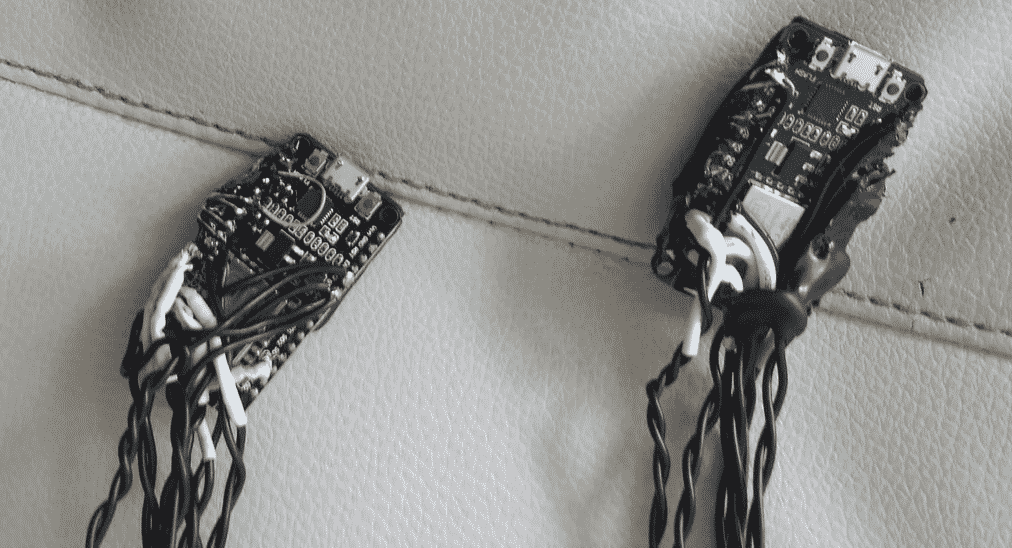
Soldering NODE MCU controllers on wires in 2018
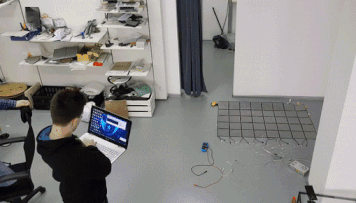
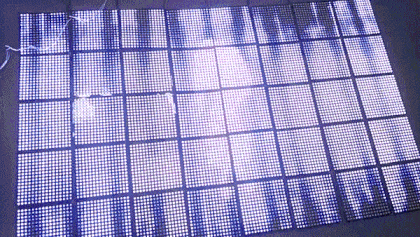
· One diode output + button / two diode outputs.
· Maximum 680 diodes per controller.
· Client/ server system for controllers synchronization via Wi-Fi.
Controllers remained one of the weakest parts of all products. They broke down quite often, as they were soldered by hinged mounting. After expanding the capabilities of the controllers, our team has faced the task of improving the quality of their work and their reliability.
In 2019, the first versions of printed circuit boards were developed and after that, there were much fewer problems with controllers. Since then, all printed circuit boards are manufactured on industrial equipment and have high accuracy and reliability.
It took us too long to personalize the firmware of each controller, so we decided to start a big new project to solve this problem. This project was supposed to include the ability to configure the controller without programming skills. Our clients could from that moment modify the data after receiving the controllers. As part of this project, we wrote a large number of our own libraries, which allowed us to increase the performance of controllers by 8 times.
In 2019, we’ve brought the synchronization between controllers to a good level. This allowed our customers to plan much more complex shows involving multiple LED and Smart Pixel products in sync.
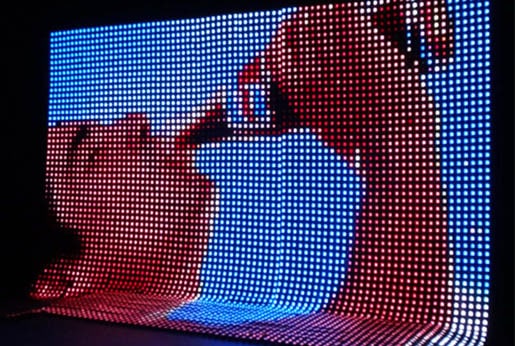
· We transferred controllers to PCB soldering.
· We began to use slots for memory cards, which allowed us to reduce the number of defects.
· All controllers have universal firmware and are set up individually using a config. file, which does not require significant time expenditures, as well as long training of employees.
· Copy protection on all controllers.
· Added the ability to change modes, such as show list, auto-switch, and standalone.
· Added the synchronization option with various stage equipment, as well as between several controllers.
In 2020 we began to receive more requests from customers to expand the functionality of control systems.
As a result, this very year it becomes possible to use sound activation when working with our Smart LED products.
Software is being created to manage the controllers from a distance via a radio channel. All this allowed our clients to create more and more complex light shows with our LED props and light-up costumes.
New compact LED products required miniaturization of controllers. We developed boards to accomplish these tasks and have been successfully used them ever since.
Work is underway on a new controller and kept on working on an increase in the performance of all controllers existing at that time.
· Developed 3 versions of printed circuit boards to optimize the soldering processes and the reliability of the controller.
· A complete refactoring of the firmware was carried out, which made it possible to further speed up the controller.
· Launched the option of sound activation of controllers.
· Launched wireless Artnet real-time control, 1500 diodes 30 FPS with a reliable connection, plus the possibility of writing libraries.
· We started development and carried out the first tests of managing the controller from the WEB page.
Sound Activation Tests with NODE MCU (2020):
· DMX -> RF433 transmitter – extension to 16 radio channels (unique control over up to 16 LED suits).
· DMX -> RF433 transmitter on 4 different radio channels to control groups of LED suits.
· 4 lines of diodes.
· Up to 1200 diodes per line.
· Wireless Artnet real-time control, 1500 diodes 30 FSP with a reliable connection.
· Writing libraries.
· Radio sync available.
· SD card support for effects and customization.
· We started development and made the first tests of managing the controller from the WEB page.
· 6 lines of diodes.
· Up to 1200 diodes per line.
· Wireless Artnet real-time control.
· 1500 diodes 30 FSP with a reliable connection.
· Writing libraries.
· SD card support for effects and customization.
· We started development and made the first tests of controller management from the WEB page.
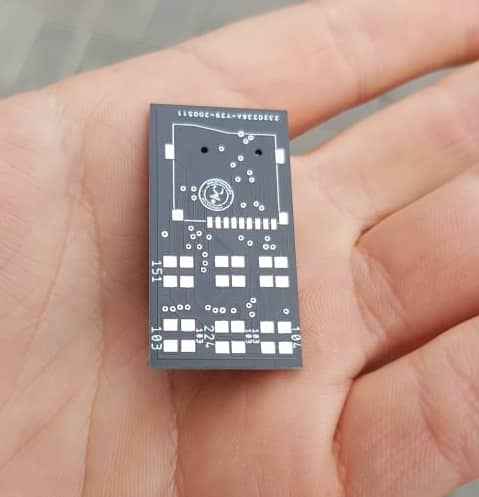 ESP-12E controller (2020)
ESP-12E controller (2020)
· We have developed 2 versions of printed circuit boards to optimize soldering processes and improve the reliability of the controller.
· We developed libraries and worked on the completion of existing ones.
· 18 diode lines at full load.
· Up to 1200 diodes per line at 25 FPS.
· Sound activation of controllers is available.
· SD card support for effects and customization.
· We launched wireless Artnet real-time control, 1500 diodes 30 FPS with a reliable connection, writing libraries.
· We started development and made the first tests of managing the controller from the WEB page. There are problems that prevent it from being used as a full-fledged controller. Working on solving these problems.
· USB -> RF433 transmitter to work with our ShowMaker Java software (Windows, Mac).
The firmware has been migrated to the new Arduino programming platform -> VSCode + PlatformIO + GitHUB.
This year we plan to launch a full-fledged control using the controller’s browser page, simultaneous with the work of diodes.
Another goal is to bring to the required functionality the direct conversion of image files from an SD card to an LED suit. As a result, it will also be possible to set all conditions like speed, brightness, sound activation, etc.
It is also planned to take 2.4 GHz wireless ArtNet to the next level, as well as add a LAN for reliable data transmission.
To date, this controller has lost its relevance due to the release of ESP 32.
· A pilot version of the controller’s web page has been launched.
· We improved the library for working with SD cards, which allowed us to increase the FPS.
· Animation API – direct conversion of image files from an SD card to an LED suit, and you can set all the conditions: speed, brightness, start with sound, etc.
· Launched v1 version of the WEB-page for controlling the controller from it: changing the effect number, brightness, effect speed, and other settings.
· The library for working with SD cards has been redesigned, which allowed increasing the FPS.
· Animation API – direct conversion of image files from an SD card to an LED suit. You can customize various options for it: speed, brightness, sound activation, etc.
· A printed circuit board has been developed.
· All controllers have universal firmware and are configured individually using a config. file, which does not require significant time expenditures, as well as long training of employees. All controllers have copy protection.
· The ability to change modes, such as show list, auto-switching, standalone, test mode, and real-time ArtNet, which is under improvement.
· Synchronization with various stage equipment available, as well as synchronization between several controllers.
· 18 lines of diodes.
· 1000+ diodes on each and this limiting affects FPS only.
· The number of analog inputs has been increased, which allows using the controller’s capabilities to the fullest.
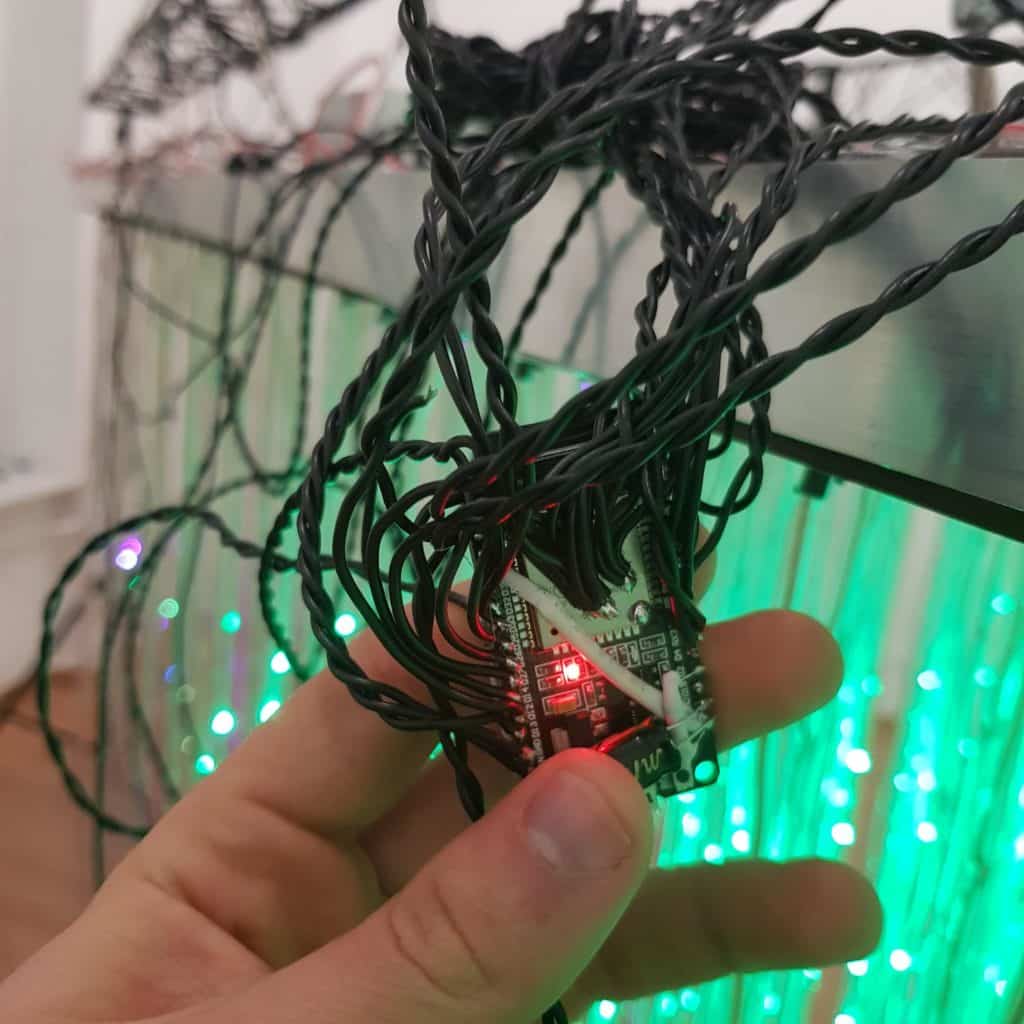 ESP 32 (2021). Test launch of the new 3D Cube with 16k LEDs without printed PCB
ESP 32 (2021). Test launch of the new 3D Cube with 16k LEDs without printed PCB